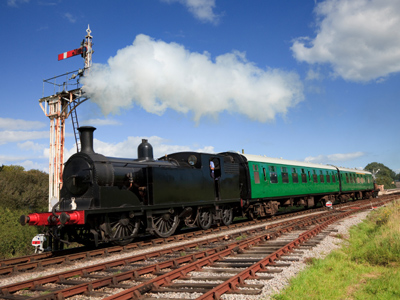
Ask the AI Tutor
Need help with Victorian - Everyday Life? Ask our AI Tutor!
AI Tutor - Lucy
Connecting with Tutor...
Please wait while we establish connection

The railway was the new type of transport that made travel easier for Victorians.
Victorian - Everyday Life
What was life like in Victorian times? Discover how new inventions, hard work, and strict rules shaped everyday life for children and adults in this KS2 History quiz.
1 .
What were most Victorian houses built of?
Wood and straw
Mud
Brick and slate
Concrete
The Industrial Revolution made bricks much easier and cheaper to make
2 .
Where did Victorians begin to take holidays or day trips?
At the seaside
In Spain
In London
In France
Seaside places, such as Scarborough and Blackpool, grew to accommodate the holiday makers
3 .
What was the new type of transport that made travel easier?
Cars
Buses
Aeroplanes
Railways
The first public railway in the world was set up in Britain by George Stephenson in 1825. More and more railway lines opened over the Victorian era
4 .
Where would poor people be sent if they had no home or money?
The countryside
The seaside
The workhouse
The poor shed
There were no state benefits, like old age pensions or sickness benefit, in Victorian times
5 .
What was a back to back?
A type of train
A factory machine
A house built for mill workers
A school desk
Houses were built joined together at the back so only had windows at the front
6 .
What powered the factories?
Electricity
Gas
Steam power
Solar power
Steam power was produced by heating water with coal fires
7 .
Why did more people move into towns during the Victorian era?
Because towns had better shops
To work in the new factories and mills
They didn’t like the countryside anymore
To live in better houses
The Victorian era came just after the Industrial Revolution which led to many new jobs in the towns and cities
8 .
How did most Victorians heat their homes?
Gas central heating
Coal fires
Electric heaters
Solar power
Gas and electricity companies came much later
9 .
Who introduced the first police force?
Robert Peel
Bobby Brown
William Gladstone
Benjamin Disraeli
The police are sometimes called 'Bobbies' or 'Peelers' after him
10 .
When was the Victorian Era?
1637 - 1701
1737 - 1801
1837 - 1901
1937 - 2001
Queen Victoria came to the throne in 1837 when she was 18 years old. She lived to be 81
**Unlimited Quizzes Await You! 🚀**
Hey there, quiz champ! 🌟 You've already tackled today's free questions.
Ready for more?
Ready for more?
🔓 Unlock UNLIMITED Quizzes and challenge yourself every day. But that's
not all...
not all...
🔥 As a Subscriber you can join our thrilling "Daily Streak" against other
quizzers. Try to win a coveted spot on our Hall of Fame Page.
quizzers. Try to win a coveted spot on our Hall of Fame Page.
Don't miss out! Join us now and keep the fun rolling. 🎉
**Unlimited Quizzes Await You! 🚀**
Hey there, quiz champ! 🌟 You've already tackled today's free questions. Ready for more?
🔓 Unlock UNLIMITED Quizzes and challenge yourself every day. But that's not all...
🔥 As a Subscriber you can join our thrilling "Daily Streak" against other quizzers. Try to win a coveted spot on our Hall of Fame Page.
Don't miss out! Join us now and keep the fun rolling. 🎉






